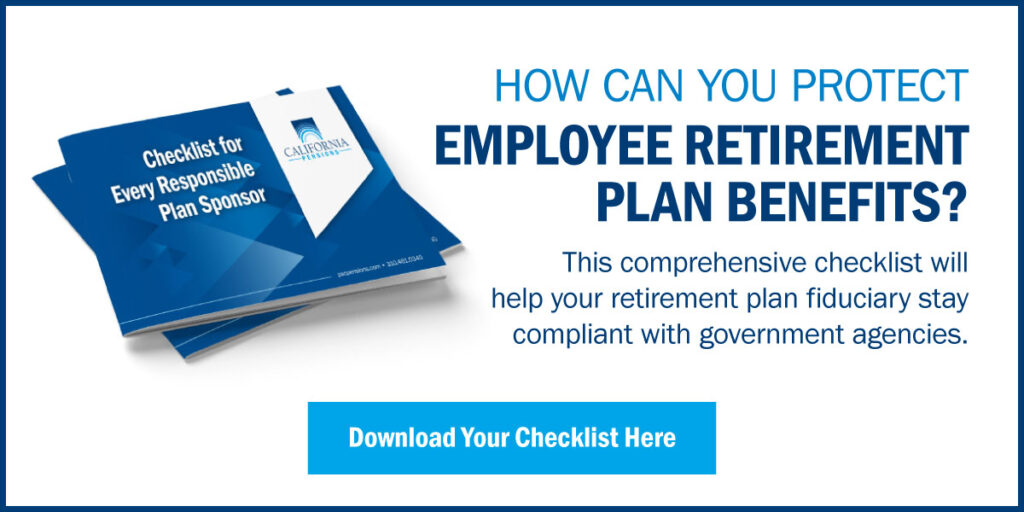As the world continues to bounce back after the 2020 pandemic, there are still changes being made to the world of retirement and employee benefits. Plan sponsors have numerous responsibilities when it comes to running a plan, but here are 7 changes that retirement plan sponsors should take note of.
Plan Compliance is a Top Priority – Remember Key Dates With our Calendar
Defined Contribution Plans
Under the SECURE Act, defined contribution plan balances must be expressed as both a life annuity and qualified joint and survivor annuity. Additionally, starting September 2021, each benefit statement that is issued must contain the required disclosures. New disclosures are made on an annual basis. So as long as plan sponsors are compliant with the new regulations, they will be protected from any liability resulting from disclosures.
Addressing CARES Act
The CARES Act was passed in 2020 as a response to the ongoing struggles associated with the pandemic. Plan sponsors need to ensure that their retirement plans are properly amended per the CARES Act, including having a process in place to pay back COVID distributions to qualified plans.
Cybersecurity
Cybersecurity continues to remain a top priority in protecting your retirement plan and confidential information. Plan sponsors can take the extra step to ask their company’s insurance provider to see if cybercrime coverage is available. As a plan sponsor, it is your responsibility to keep confidential information safe.
SECURE Act Provisions Still in Effect
While the SECURE Act was passed in 2019 and went into full effect in 2020, there are provisions and changes to be aware of:
- The cap for automatic enrollment for safe harbor plans has been increased to 15% after the first plan year. The 10% limit for the first plan year in which an employee defers is still in effect.
- Annual safe harbor notices for non-elective safe harbor IRC Section 401(k) plans are no longer required.
- Participants are able to withdrawal from their retirement plan in case of birth or adoption without penalties
- Plan sponsors must allow long-term employees working at least 500 hours but less than 1000 hours per year to take part in their plans.
Expand Retirement Plan Savings
Among the goals of the 2019 SECURE Act was to expand retirement savings. One way that this is being accomplished is through pooled employer plans (PEPs). With a PEP, unrelated employers can join together to form a shared retirement plan. Once formed, the group will designate a pooled plan provider to serve as the plan fiduciary and administrator who registers with the Department of Labor and Treasury Department. A PEP will save these employers money from administrative costs associated filing a Form 5500 since only one will be filed. As the year continues, we anticipate these plans to become more common.
Think Green
DOL regulations now permit web posting and email delivery of retirement plan documents.
SECURE Act 2.0 on the Horizon
The SECURE Act 2.0 in is the process of becoming law. The overarching goal with this new legislation is to address the retirement savings crisis even further. From address student loan debt and delaying the required minimum distribution age to expanding automatic enrollment, there are many changes that could come into effect if passed. To learn more about these changes, check out our blog SECURE Act 2.0: How Does it Affect Your Retirement?
When it comes to the world of retirement and employee benefits, plan sponsors are constantly on the lookout for new legislative changes in order to stay compliant. In order to stay on top of it all, many plan sponsors and administrators seek the help of qualified advisors such as the team at California Pensions. If you need assistance or would like to discuss how any of these changes could affect your plan – contact us today.





